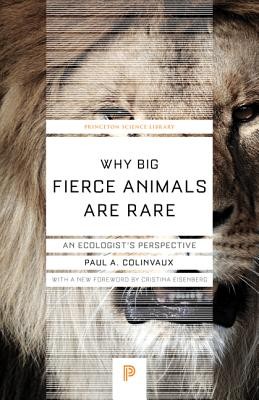
- We will send in 10–14 business days.
- Author: Paul A Colinvaux
- Publisher: Princeton University Press
- ISBN-10: 0691178089
- ISBN-13: 9780691178080
- Format: 13.7 x 21.6 x 2.3 cm, softcover
- Language: English
- SAVE -10% with code: EXTRA
Reviews
Description
First published in 1979, Why Big Fierce Animals Are Rare has established itself as a seminal work in ecology. Now with a new foreword by ecologist and writer Cristina Eisenberg, this penetrating study of ecosystems and animal populations is more relevant than ever. What accounts for the many different species of insect? Why does the robin population stay relatively steady year after year, despite the fact that their nests contain several chicks at once? Paul Colinvaux traces the ecologist's quest to answer these questions and more in this accessibly written book. He brings to the subject both profound knowledge and an enthusiasm that will encourage a greater understanding of the environment and of the efforts of those who seek to preserve it.
- Author: Paul A Colinvaux
- Publisher: Princeton University Press
- ISBN-10: 0691178089
- ISBN-13: 9780691178080
- Format: 13.7 x 21.6 x 2.3 cm, softcover
- Language: English English
First published in 1979, Why Big Fierce Animals Are Rare has established itself as a seminal work in ecology. Now with a new foreword by ecologist and writer Cristina Eisenberg, this penetrating study of ecosystems and animal populations is more relevant than ever. What accounts for the many different species of insect? Why does the robin population stay relatively steady year after year, despite the fact that their nests contain several chicks at once? Paul Colinvaux traces the ecologist's quest to answer these questions and more in this accessibly written book. He brings to the subject both profound knowledge and an enthusiasm that will encourage a greater understanding of the environment and of the efforts of those who seek to preserve it.


Reviews